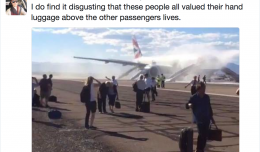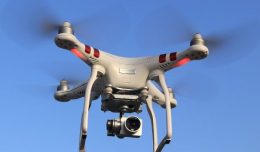Word of a looming pilot shortage has been making headlines. The Wall Street Journal, National Public Radio and most of the major network news channels have carried the story.
It’s amazing how the media can pick up and run with something, regardless of how unclear or inaccurate the premise is.
What does “pilot shortage” really mean?
The idea that airlines will soon face an “acute shortage of pilots,” as a Journal piece recently put it, is both true and untrue. It depends very much on which sector of the airline industry we’re talking about. We need to draw a sharp divide between the major carriers and their regional affiliates. It’s the latter that may have a problem on its hands.
The major carriers will always have a surplus of highly qualified candidates to choose from. They are able to cull from from the top ranks of the regional carriers, as well as from the military. The impending wave of retirements won’t come close to depleting a supply of senior, highly experienced regional airline pilots who would kill for a slot with a major. That is, if and when they are hiring. Attrition is slow, and at the moment there are more than 3,000 pilots on indefinite furlough from the likes of American, United, and US Airways, some of whom have been laid off for ten years or more. A friend of mine who lost his job at TWA and American recently took a position in Dubai because decent US flying jobs are so scarce. He’s one of many.
At the regionals it’s a slightly different story. By regionals we’re referring to the numerous subcontractors who operate smaller jets and turboprops on behalf of the network carriers: those myriad “Connection” and “Express” carriers. This sector of the industry has expanded tremendously over the past twenty years or so, and now accounts for an astonishing one-half (53 percent to be exact) of all domestic departures in the United States.
Pay and working conditions are often terrible at these companies, with salaries starting at around $20,000 annually — sometimes less. And with little to no hiring by the majors, pilots are figuring out that a job with a regional often means a career with a regional. An aspiring aviator has to ask, is it worth sinking $50,000 or more into one’s primary flight training, plus the time it will take to build the requisite number of flight hours, plus the cost of a college education, only to spend years toiling at poverty-level wages, with at best a marginal shot at moving on to a major?
Meanwhile, the FAA is about to enforce tougher hiring standards for entry-level pilots. Over the past two decades, as the regional sector grew and grew, thousands of new pilot jobs were created. To fill these slots, airlines sharply lowered their experience and flight time minimums for new-hires. Suddenly, pilots were being taken on with as little as 350 hours of total time, assigned to the first officer’s seat of sophisticated regional jets. Twenty or thirty years ago this would have been unthinkable. Then came a rash of accidents, including the Colgan Air (Continental Connection) disaster outside Buffalo in 2009. Regulators began taking a closer look at hiring practices, eventually enacting legislation that that will mandate higher flight time totals and additional certification requirements for new-hires.
(The new rules may sound highly restrictive to young pilots, but really all they’re doing is returning things to historical norms. My first job with a regional — “commuters” we called them in those days — was in 1990. Competitive applicants at the time had between 1,500 and 2,000 hours, and most of us had an FAA Airline Transport Pilot certificate as well. And that was to fly an unpressurized 15-seater.)
There are fewer pilots getting into the business — understandably so. And those that are getting in will have to accrue substantially more flight time before sending resumes to the airlines. Thus, the hiring pool is drying up.
How much it dries up, however, remains to be seen.
In summary, there will not be a shortage of pilots per se. But there may be a shortage of pilots willing to work for the pay and benefits offered by regional airlines.
Meanwhile, there are those who feel that cries of a coming shortage are little more than an industry strategy intended to encourage the FAA to water down the tougher hiring rules. Captain Chesley Sullenberger, speaking to the media in December, referred to “cynics” who were “crying wolf” over the matter. It’s somewhat telling that virtually no regional carriers have raised their salaries or benefit packages to levels that would appear aimed at retaining or attracting pilots.
And the regionals are no longer growing like they once were. On the contrary, many are downsizing and laying off. Comair, a Delta Connection carrier and one of the oldest and largest regionals, recently shut its doors, throwing 500 or so pilots onto the street, many of whom had been with the company for twenty years or more. The much maligned Colgan Air also ceased operations. Others are overstaffed, and at least one large regional is offering early-retirement incentives and soliciting voluntary leaves of absence.
If you ask me, there will be plenty of experienced crewmembers out there in the foreseeable future, hungry for work. Even with the tougher new hiring rules, airlines big and small can continue to expect a hundred or more applications for every available job.
For a deeper look at this topic, including its implications on safety, see the author’s earlier column on Salon.com.
This article was originally published on AskThePilot.com and is used here with the author’s permission. Patrick Smith is an airline pilot, air travel columnist and author behind the site AskThePilot.com. In his spare time he has visited more than 70 countries and always asks for a window seat. He lives in Somerville, Massachusetts.







